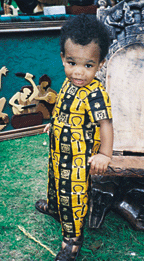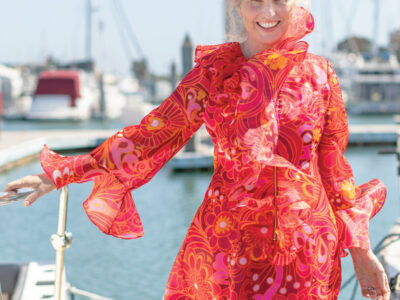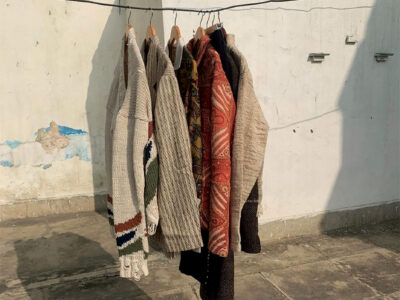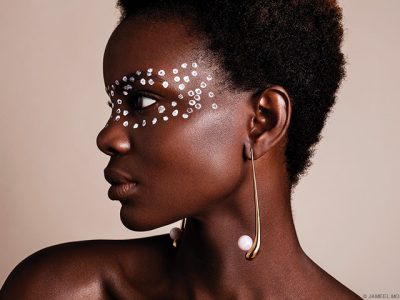
Mudcloth. To many parents that describes their kids’ clothes after they’ve been playing outside. But the mudcloth that Stacia Gray-Crawford C’89 sells is part of her African-inspired line of children’s clothing and home accessories. Gray-Crawford, a television producer in Chicago, says her side business, African Accents (www.accentafrica.com), grew out of her own cultural pride and a miscommunication with a friend.
Having bought a townhouse in Chicago several years ago, she was looking for a low-budget way to redecorate her place. Combining an interest in ethnic decoration with basic sewing skills, she began creating African-inspired slipcovers, tablecloths, shower curtains, and towels—and earning raves from visitors.
When Gray-Crawford heard that a friend from Connecticut had some “good news,” she concluded that the woman was pregnant and used some leftover fabric to make a crib set for her. “Later I found out her good news was that she bought a new car. I had this beautiful crib set and wondered, ‘Now who am I going to give it to?’ I thought that for parents who want to give a nursery a more cultural flair, there really isn’t anything available. So I had a bunch of them made and brought them to a black business expo. Out of that the business kind of blossomed.”
Gray-Crawford contracted with a manufacturer and began selling the pieces through stores as well as through mail-order and the Internet. Finding herself with many enthusiastic one-time customers, she decided to design a line of children’s clothing to give them “a reason to come back to me.” She also fills custom orders for adult clothing and has been planning to launch a full adult line.
Though they are made from imported African fabrics, the children’s clothes are fashioned into contemporary styles like jumpers and shorts sets.
One popular design is inspired by the mud cloth worn in West Africa. Traditional mudcloth is made from delicate strips of cotton sewn together and steeped for weeks in the sun with a mixture of ground-up tree bark, dirt, and water. “Back in the day it was meant only for royalty and was something one might wear for a wedding or a funeral.” Now it’s mass-produced in a stronger fabric, making it appropriate for everyday wear.
Though it is usually the parents who appreciate the cultural significance of her clothing, Gray-Crawford recalls the effect one of her dresses had on a five-year-old. “Her father called and said, ‘I have to get her another dress.’” He had told her about her African heritage and whenever anyone commented on her dress, “She would tell them this was her African dress. She wanted to wear it every day because she was so proud of it.”




